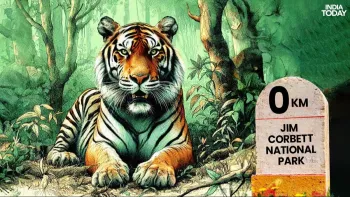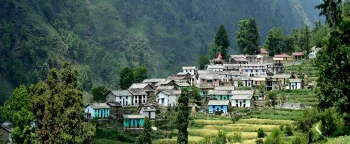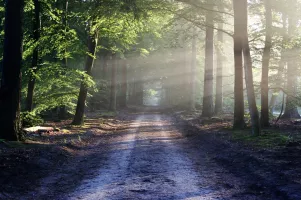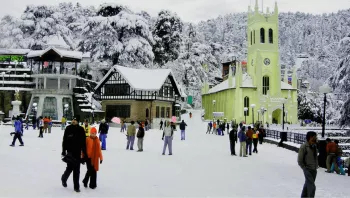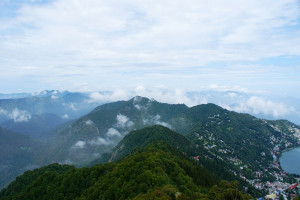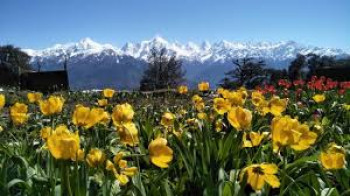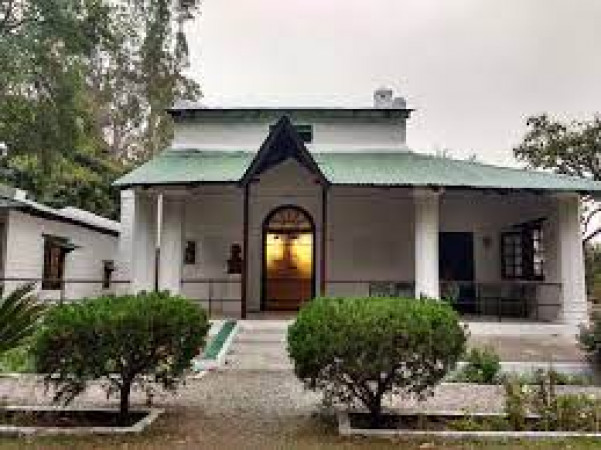
Corbett Museum Travel Guide
Corbett Museum is located in the heart of Uttarakhand, India, near the famous Jim Corbett National Park. The museum is dedicated to the renowned hunter and naturalist Jim Corbett, who played a significant role in the conservation of wildlife in India. The museum showcases his belongings, manuscripts, and hunting memorabilia, offering visitors a glimpse into his adventurous life and the history of the region. Corbett Museum is a must-visit for nature lovers and history enthusiasts alike.Top Attractions in Corbett Museum
- Jim Corbett National Park
- Garjiya Devi Temple
- Corbett Waterfall
- Dhikala Zone
- Corbett Wildlife Safari
Corbett Museum is Famous for
Wildlife enthusiasts flock to Corbett Museum for its rich biodiversity and the opportunity to spot the majestic Bengal tiger in its natural habitat.Top Attractions in Corbett Museum
- Explore the Jim Corbett National Park
- Visit the mystical Garjiya Devi Temple
- Marvel at the Corbett Waterfall
- Experience the wilderness in the Dhikala Zone
- Embark on a thrilling Corbett Wildlife Safari
What's Great about Travelling to Corbett Museum?
- Perfect destination for nature lovers
- Great opportunity for wildlife photography
- Excellent choice for a family vacation
What's Not So Great about Travelling to Corbett Museum?
- Not ideal for those seeking a bustling city experience
- Limited dining and accommodation options
- May not be suitable for individuals with mobility issues
Travel Tips for Corbett Museum
- Obtain necessary permits for wildlife safaris in advance
- Dress appropriately for jungle excursions
- Respect the wildlife and follow park rules
Important Corbett Museum trip information
- Ideal Duration: A 3-4 day trip is recommended to explore the area thoroughly.
- Best Time to Visit: The best time to visit Corbett Museum is from November to June.
- Nearby Airports and Railway Stations: The nearest airport is Pantnagar Airport, and the nearest railway station is Ramnagar Railway Station.
Per Person
10,500
*EXCLUDING APPLICABLE TAXES 4.2 Ratings
( 41 Reviews )
( 41 Reviews )
Per Person
6,150
*EXCLUDING APPLICABLE TAXES 4.1 Ratings
( 56 Reviews )
( 56 Reviews )
Per Person
4,000
*EXCLUDING APPLICABLE TAXES 5.0 Ratings
( 9 Reviews )
( 9 Reviews )
Per Person
25,000
*EXCLUDING APPLICABLE TAXES 4.1 Ratings
( 56 Reviews )
( 56 Reviews )
Per Person
16,500
*EXCLUDING APPLICABLE TAXES 5.0 Ratings
( 157 Reviews )
( 157 Reviews )
Per Person
40,000
*EXCLUDING APPLICABLE TAXES 5.0 Ratings
( 157 Reviews )
( 157 Reviews )
FAQ's on Corbett Museum
Q1: What is the best time to visit Corbett Museum?
The best time to visit Corbett Museum is during the winter months from November to February when the weather is pleasant and ideal for exploring the museum. Avoid the monsoon season from July to September due to heavy rainfall. Wildlife enthusiasts may prefer visiting during the summer months from March to June for better chances of spotting animals in the nearby national park.
Q2: Do I need a visa to travel to Corbett Museum?
Most visitors to Corbett Museum will need a tourist visa to enter the country. Check with the nearest embassy or consulate for specific visa requirements based on your nationality. Some countries may be eligible for visa on arrival or e-visa facilities. Make sure to have a valid passport with at least six months validity from the date of entry.
Q3: What are the must-visit attractions in Corbett Museum?
Corbett Museum is a treasure trove for wildlife enthusiasts with exhibits showcasing the history and life of Jim Corbett. Don't miss the Corbett's hunting relics, personal belongings, and the fascinating stories behind each artifact. Explore the nearby Jim Corbett National Park for thrilling wildlife safaris and the chance to spot tigers, elephants, and more in their natural habitat.
Q4: Is Corbett Museum a safe place to travel?
Corbett Museum is generally safe for travelers. However, like any tourist destination, it's advisable to take necessary precautions. Avoid venturing into isolated areas alone, be cautious of your belongings, and follow local regulations. Consult local authorities or your accommodation for any specific safety concerns.
Q5: What is the local currency in Corbett Museum and can I use credit cards?
The local currency in Corbett Museum is the Indian Rupee (INR). ATMs are available in nearby towns and major cities for cash withdrawals. While credit cards are accepted in some establishments, it's recommended to carry cash for small purchases and in remote areas. Notify your bank before traveling to avoid any issues with card transactions.
Q6: What is the local cuisine like in Corbett Museum?
Corbett Museum offers a taste of authentic Indian cuisine with flavorful dishes like biryani, kebabs, and curries. Don't miss trying local specialties like "dal makhani" and "paneer tikka." Vegetarian options are widely available, and dietary restrictions can usually be accommodated upon request. Embrace the local flavors by dining at traditional restaurants or exploring street food stalls.
Q7: What transportation options are available in Corbett Museum?
Transportation options in Corbett Museum include taxis, auto-rickshaws, and rental cars for getting around locally. Public buses and shared jeeps are also available for traveling to nearby towns. For longer distances, consider hiring a private car or booking a tour package that includes transportation. Plan your transportation in advance to make the most of your visit.
Q8: Are there any cultural norms or etiquette I should be aware of when visiting Corbett Museum?
When visiting Corbett Museum, respect local customs by dressing modestly, especially when visiting religious sites. Remove your shoes before entering temples or homes, and ask for permission before taking photographs of locals. Greet people with a "namaste" and be mindful of cultural sensitivities. Avoid public displays of affection and always ask before touching someone's belongings. Immerse yourself in the local culture by learning a few basic phrases in Hindi and showing appreciation for the traditions of the region.
Q9: I am a travel agent. How can I buy travel leads of Corbett Museum?
Register yourself as a travel agent at agents.tripclap.com and then you can buy travel leads to Corbett Museum once your account is approved. For more details contact our support team at +91-8069186564 or support@tripclap.com
